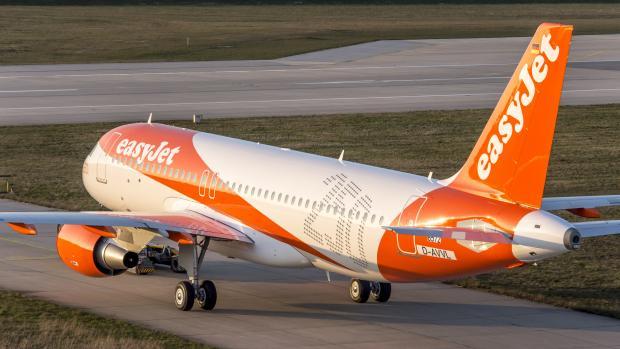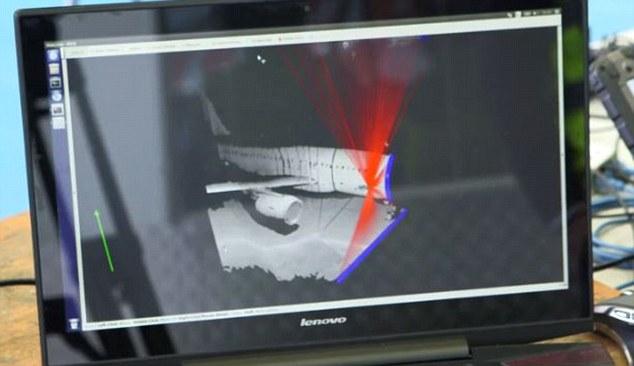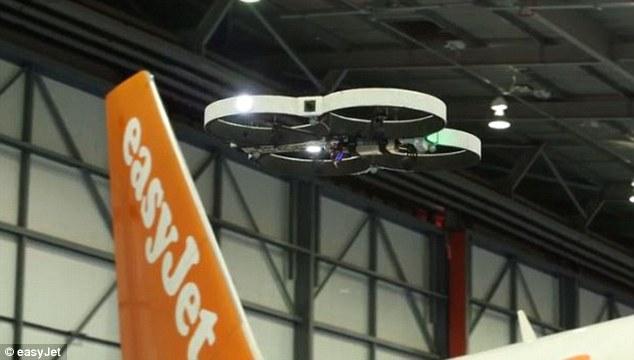If you’ve ever been stuck on a runway for an hour or two–or even miserably more–while a last-minute part was replaced on your plane, or perhaps have been left waiting in an airport hub for hours, you probably sometimes just consider abandoning airlines altogether. Airlines are well aware of the hassles passengers undergo at times, as well as the intense and ever-growing competition in their marketplace.
 EasyJet is turning to the latest innovations and technological savvy as the key to drawing more passengers, and gaining their ongoing loyalty. Turning to a growing list of exciting ways to make processes more streamlined for their passengers, EasyJet is employing progressive technology to make some very modern changes.
EasyJet is turning to the latest innovations and technological savvy as the key to drawing more passengers, and gaining their ongoing loyalty. Turning to a growing list of exciting ways to make processes more streamlined for their passengers, EasyJet is employing progressive technology to make some very modern changes.
While some of the action will be happening behind the scenes, such as the use of 3D printing for parts and drones for maintenance, the airline hopes that by making their flights as trouble-free as possible in terms of speed and expediency, passengers will end their journeys without complaints of hassle, long waits, and hold-ups in the airport or on the runway, but instead with positive reports of cool apps, and streamlined processes for departures and arrivals.
“Easyjet has always been pioneering,” said Easyjet chief executive Carolyn McCall. “ We revolutionised travel in Europe enabling people to fly to more places more cheaply than before. From our birth almost 20 years ago we have innovated from selling through the web and more recent moves like introducing allocated seating.”
With the use of 3D printing, EasyJet hopes to cut down on hours spent and delays forced due to parts replacement. The technology should be of vital importance in providing replacements both quickly and affordably for plastic parts like arm rests. That may pave the way for 3D printing a multitude of different cabin parts.
3D printing for jet engine parts is already well underway in the aerospace industry, as the technology has proven itself as an invaluable source for allowing companies to produce higher quality parts at higher efficiency and production rates, with a lower bottom line. That’s an obvious win-win for everyone involved from beginning to end, and EasyJet plans to take advantage of this new and highly beneficial manufacturing revolution, having confirmed that they have already ordered 3D printed fuel nozzles and fan blades for jet engines coming down the production line.
Also in the works for further revolutionizing workflow at EasyJet is the use of unmanned drones for expediency in inspections and routine tasks. The technology is expected be in use at European locations over the next year.
“The use of these emerging technologies frees up our engineering and digital teams to enable them to undertake more skilled tasks, keeping our costs down which in turn keeps our fares low, helps minimise delays and ensures that we maintain our industry leading punctuality for our passengers,” said Ian Davies, Easyjet’s head of engineering. “Safety is our number-one priority and so all of these new technologies will be applied by our experienced engineering and flight crew to ensure our leading safety record is maintained.”
Automated checks by the drones should lead to a happier experience all-around, as drone repairs have been successfully tested and show that a great deal of time should be saved while doing repairs, as well as performing routine checks and inspections.
“We have made great strides on our work with drone technology having successfully tested automated drone inspections of our aircraft and we have agreed a new collaboration with Airbus for an inflight prognosis tool,” said chief executive of EasyJet, Carolyn McCall. “”Both of these support our aim of eliminating technical related delays.”
Customers should also be able to look forward to a polished and speedy phone app which will allow them to book a flight in just a couple of minutes using the iOS app (with an Android app coming soon).
The app includes:
- Scanning of your passport
- Real-time flight info
- Automatic check-in
- Gate information
EasyJet has also launched an app for the Apple Watch so that you can receive all notifications, as well as use your device as a digital boarding card.
What do you think of the changes EasyJet is making through the use of 3D printed replacement parts for their cabins, as well as engine parts? Would you use their new app? Discuss in the EasyJet to Use 3D Printed Parts and More forum over at 3DPB.com.
Subscribe to Our Email Newsletter
Stay up-to-date on all the latest news from the 3D printing industry and receive information and offers from third party vendors.
You May Also Like
Precision at the Microscale: UK Researchers Advance Medical Devices with BMF’s 3D Printing Tech
University of Nottingham researchers are using Boston Micro Fabrication‘s (BMF) 3D printing technology to develop medical devices that improve compatibility with human tissue. Funded by a UK grant, this project...
3D Printing Webinar and Event Roundup: April 21, 2024
It’s another busy week of webinars and events, starting with Hannover Messe in Germany and continuing with Metalcasting Congress, Chinaplas, TechBlick’s Innovation Festival, and more. Stratasys continues its advanced training...
3D Printing Webinar and Event Roundup: March 17, 2024
It’s another busy week of webinars and events, including SALMED 2024 and AM Forum in Berlin. Stratasys continues its in-person training and is offering two webinars, ASTM is holding a...
3D Printed Micro Antenna is 15% Smaller and 6X Lighter
Horizon Microtechnologies has achieved success in creating a high-frequency D-Band horn antenna through micro 3D printing. However, this achievement did not rely solely on 3D printing; it involved a combination...
































